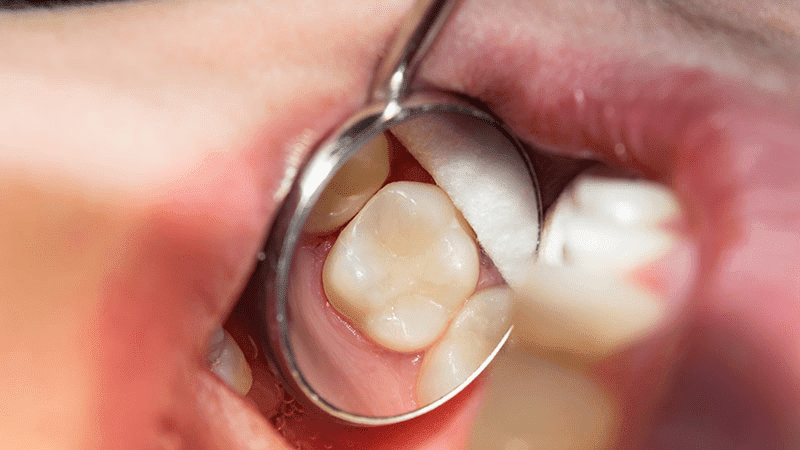If you’ve ever had a “resin” placed to repair a cavity, a fracture, or to improve the aesthetics of your teeth, you probably left the dental office with a smile on your face and the feeling that the problem was solved. And in part, it was… but not entirely.
Because even though many forget, dental resins are not eternal. They’re not magic. And they’re definitely not immune to the passage of time. Like everything in dentistry (and in life), they have a lifespan. And understanding this can make the difference between preserving your teeth or facing bigger problems down the road.
This article isn’t about scaring you. It’s about informing you. Because there’s a big difference between a restoration that’s well done and one that’s well maintained. And here we’re going to tell you everything you need to know—without unnecessary jargon—about how long a dental resin really lasts and how to take care of it.
What is a dental resin and what is it used for?

Let’s start from the basics.
Dental resin is a restorative material used to rebuild teeth damaged by cavities, fractures, or wear. It’s a paste that is shaped into the cavity and hardened with a special light. Its big advantage: it’s aesthetic, adhesive, and minimally invasive.
In other words, it bonds directly to the tooth (without the need to grind it down like with a crown) and looks almost identical to natural enamel.
But here’s something important to understand: resin doesn’t “heal” the tooth. It only restores it. And like any adhesive material, it’s subject to the laws of wear, use, and time.
Factors that influence the durability of dental resins
The big question: How long does a resin last?
The most honest answer: it depends.
And we’re not saying this as a vague excuse. We’re saying it because there are many factors that directly influence the longevity of a resin restoration:
- The professional’s technique: A poorly placed resin, one that’s not sealed properly, or applied without adequate isolation can fail within weeks.
- The quality of the material: Not all resins are the same. Some are more resistant, others more aesthetic, others cheaper (and it shows).
- The size of the restoration: The larger the restored area, the more stress it endures… and the shorter its lifespan.
- The area of the mouth: Molars take on more chewing force. Resins in these areas wear down faster.
- The patient’s habits: Teeth grinding, chewing ice, biting on pencils… it all adds up.
- Hygiene: If the area isn’t cleaned properly, bacterial plaque wins. And the resin loses.
As Dr. Alejandra Mora says:
“All materials have expiration dates. Resins bond to the tooth, but over time that bond weakens. It’s common for restorations after 4 or 5 years to no longer seal properly, and that’s the time to replace them—even before a cavity appears.”
How long does a dental resin last on average?
Under ideal conditions, a dental resin can last between 4 and 8 years. Some studies even cite up to 10 years. But careful: that “lifespan” isn’t a guarantee. It’s just a statistic.
In clinical practice, it’s common to see resins that have worn down, leaked, or fractured much earlier than that. There are also some that last longer… but always with proper maintenance.
A good analogy would be with car tires. You don’t expect them to last a lifetime. You check them, rotate them, replace them when needed. Same with resin.
The problem is that many patients believe that once it’s done, that’s it. And that’s a mistake that can become costly.
Signs that a dental resin needs to be replaced

The big risk of an old resin isn’t just that it looks bad or might fall out. It’s that it can fail without you noticing. And when you finally do notice… there’s already decay underneath, or a fracture, or pain.
Some warning signs you should watch for:
- Color changes at the edge of the resin
- Sensitivity to cold or heat in a restored tooth
- A “sticky” feeling when you run your tongue over it
- Visible leakage between the resin and the tooth
- Fractures or partial loss of the restoration
- Persistent bad odor or taste near the tooth
Don’t wait until it hurts. Old resins should be replaced when they stop sealing properly, not when decay has already set in.
Tips to extend the lifespan of dental resins
| 🪥 Effective brushing | Brush at least twice a day with proper technique. Plaque accelerates resin wear. |
|---|---|
| 🧵 Use dental floss daily | Especially between restored teeth. Helps prevent secondary cavities. |
| ❌ Avoid biting hard objects | Ice, shelled nuts, pencils… they’re enemies of your restorations. |
| 🧼 Professional cleanings | Every 6 months at minimum. Tartar weakens resin margins. |
| ⚠️ Address sensitivity | If something changes or bothers you, consult before the problem progresses. |
| 🔍 Regular check-ups | A resin may look fine but still be leaking. Exams catch what’s invisible. |
Comparative chart of restorative materials
| Material | ✅ Advantages | ⚠️ Disadvantages | 🦷 Ideal for… |
|---|---|---|---|
| Dental resin | Natural aesthetics, conservative adhesion, quick treatment | Shorter lifespan, prone to wear, technique-sensitive | Small/medium cavities, visible areas |
| Amalgam | Very resistant, economical | Poor aesthetics, requires more tooth reduction | Molars in patients with low aesthetic demands |
| Crown | High durability, strong tooth protection | Invasive, expensive, requires tooth preparation | Severely damaged teeth or large prior restorations |
| Inlay | High resistance, precision, acceptable aesthetics | Higher cost, requires lab work | Posterior teeth with moderate destruction |
The importance of regular check-ups to keep resins in good condition
Here’s the most important truth: a resin without follow-up is a ticking time bomb.
There’s nothing worse than a silently leaking restoration. Because you trust it, think everything is fine… and when you return to the dentist years later, you already need something much more complex (and expensive).
That’s why at AM Dental Studio we always insist: check-ups every 6 months are not a luxury. They’re your dental insurance. Because we detect what doesn’t hurt, what can’t be seen, and what can be prevented.
And if a resin is no longer sealing properly, we replace it before it causes a problem. That’s how it should be.
Conclusion: Is it worth trusting dental resins?
Yes. Absolutely yes. When properly indicated and placed, resins are a wonderful tool. They’re aesthetic, conservative, and functional.
But it’s important to understand they’re not eternal, and they require commitment from both the professional and the patient.
The key is knowing that every resin has a cycle. And your responsibility as a patient doesn’t end when you get up from the chair. It starts there.
When was the last time you had your resins checked?
Did you get a restoration and aren’t sure if it’s still in good condition?

Best Choice
Come visit us at AM Dental Studio in Zapopan, Guadalajara. Here, we don’t just treat you. We explain. We take care of you. And we give you clear, realistic, and personalized options.
📍 Zapopan, Guadalajara
🌐 amdentalstudiogdl.mx





